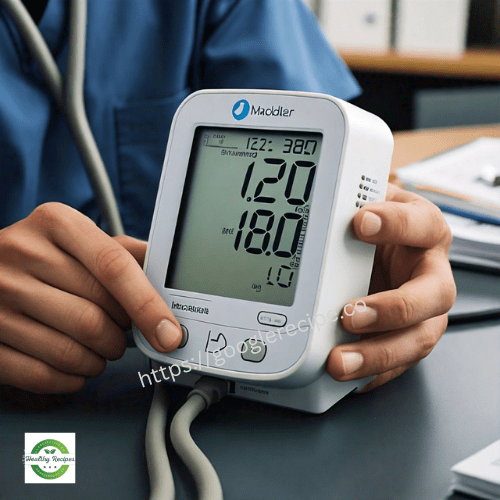what is considered a low blood pressure range
Recognizing Low Blood Pressure: Origins, Signs, and Treatments
What is considered a low blood pressure range? Today, we will talk about low blood pressure. If you want to learn what low blood pressure is, its symptoms, and how to treat it, watch this video until the end.
First, let’s understand blood pressure. Blood pressure is the force of blood moving through our blood vessels, helping blood and oxygen reach different parts of our body. This pressure is created by the heart beating and pushing blood into the vessels.
How check blood pressure?
When we check blood pressure, the machine gives two numbers. The top number is systolic blood pressure, which shows the pressure when the heart contracts and pumps blood. The bottom number is diastolic blood pressure, which shows the pressure when the heart is relaxed between beats.
For a healthy person, the top number is usually between 90 and 120, and the bottom number is between 60 and 80. This is the normal range.
Low blood pressure, or hypotension, is when the top number is below 90 and the bottom number is below 60. Blood pressure changes throughout the day, but if it consistently stays below 90/60, it’s considered low.
Signs of low blood pressure
Signs of low blood pressure include difficulty getting blood and oxygen to the brain, which can cause dizziness, blurry vision, weakness, confusion, nausea, and fainting. These symptoms often appear when standing up, called postural hypotension.
Some people naturally have low blood pressure, especially if they are very fit and healthy. They usually don’t have symptoms because their bodies are used to it. However, other factors can cause low blood pressure, such as certain medications (for heart disease, high blood pressure, and depression), diseases affecting the autonomic nervous system (like diabetes and Parkinson’s disease), Addison’s disease, anemia, and heart diseases.
Severe allergic reactions or infections can also cause low blood pressure. Older adults often have low blood pressure due to decreased water intake, and pregnant women naturally have lower blood pressure.
How treat low blood pressure?
To treat low blood pressure, it’s important to address its cause. Consult a doctor if you have symptoms. Support stockings can help by applying pressure to the legs, pushing blood towards the brain. A medication called fludrocortisone can increase blood pressure but has serious side effects and is prescribed.
If you have low blood pressure, you can take some self-help measures: stand up slowly, sit at the edge of the bed before standing in the morning, avoid standing for long periods, drink more water (about 8 glasses a day), and avoid alcohol and caffeinated drinks.
These drinks increase urine production, causing dehydration and low blood pressure. Also, avoid hot rooms and hot showers because heat causes blood vessels in the skin to expand, diverting blood away from the brain.
Conclusion
Understanding and managing low blood pressure is crucial for maintaining overall health. It’s important to recognize the symptoms and causes of low blood pressure and take appropriate measures to address it. If you experience symptoms of low blood pressure, consult your doctor to identify the underlying cause and receive proper treatment.
Simple lifestyle changes, such as standing up slowly, staying hydrated, and avoiding hot environments, can help manage low blood pressure and improve your quality of life. Thank you for watching, and take care of your health.
FAQs about Low Blood Pressure
1. What is considered low blood pressure? Low blood pressure, or hypotension, is when the systolic blood pressure (top number) is below 90 mm Hg and the diastolic blood pressure (bottom number) is below 60 mm Hg.
2. What typical signs and symptoms accompany low blood pressure? Common symptoms include dizziness, blurry vision, weakness, confusion, nausea, fainting, and difficulty concentrating.
3. What causes low blood pressure? Causes include certain medications, medical conditions like diabetes and Parkinson’s disease, Addison’s disease, anemia, heart problems, severe allergic reactions, infections, dehydration, and pregnancy.
4. Is low blood pressure always a cause for concern? Not always. Some people naturally have low blood pressure without any symptoms. However, if it causes symptoms or is due to an underlying condition, it should be addressed.
5. How is low blood pressure diagnosed? Low blood pressure is diagnosed by measuring blood pressure with a blood pressure monitor. Consistently low readings (below 90/60 mm Hg) indicate hypotension.
6. What can I do to manage low blood pressure? Stand up slowly, stay hydrated by drinking plenty of water, avoid standing for long periods, and avoid hot environments. Support stockings can also help.
7. Can low blood pressure be treated with medication? Yes, in some cases, medications like Fludrocortisone can be prescribed, but they have serious side effects and are used rarely. Typically, the goal of treatment is to deal with the underlying problem.
8. Should I avoid certain foods or drinks if I have low blood pressure? Avoid alcohol and caffeinated drinks as they can cause dehydration, which can lower blood pressure. It’s also beneficial to increase your salt intake slightly, but only under a doctor’s guidance.
9. What should I do if I feel dizzy or faint due to low blood pressure? Sit or lie down immediately to prevent falling. Elevate your legs to help blood flow to your brain. Drink water and avoid standing up too quickly.
10. When should I see a doctor about low blood pressure? See a doctor if you frequently experience symptoms of low blood pressure or if your blood pressure readings are consistently low. Finding and treating any underlying problems is crucial.


